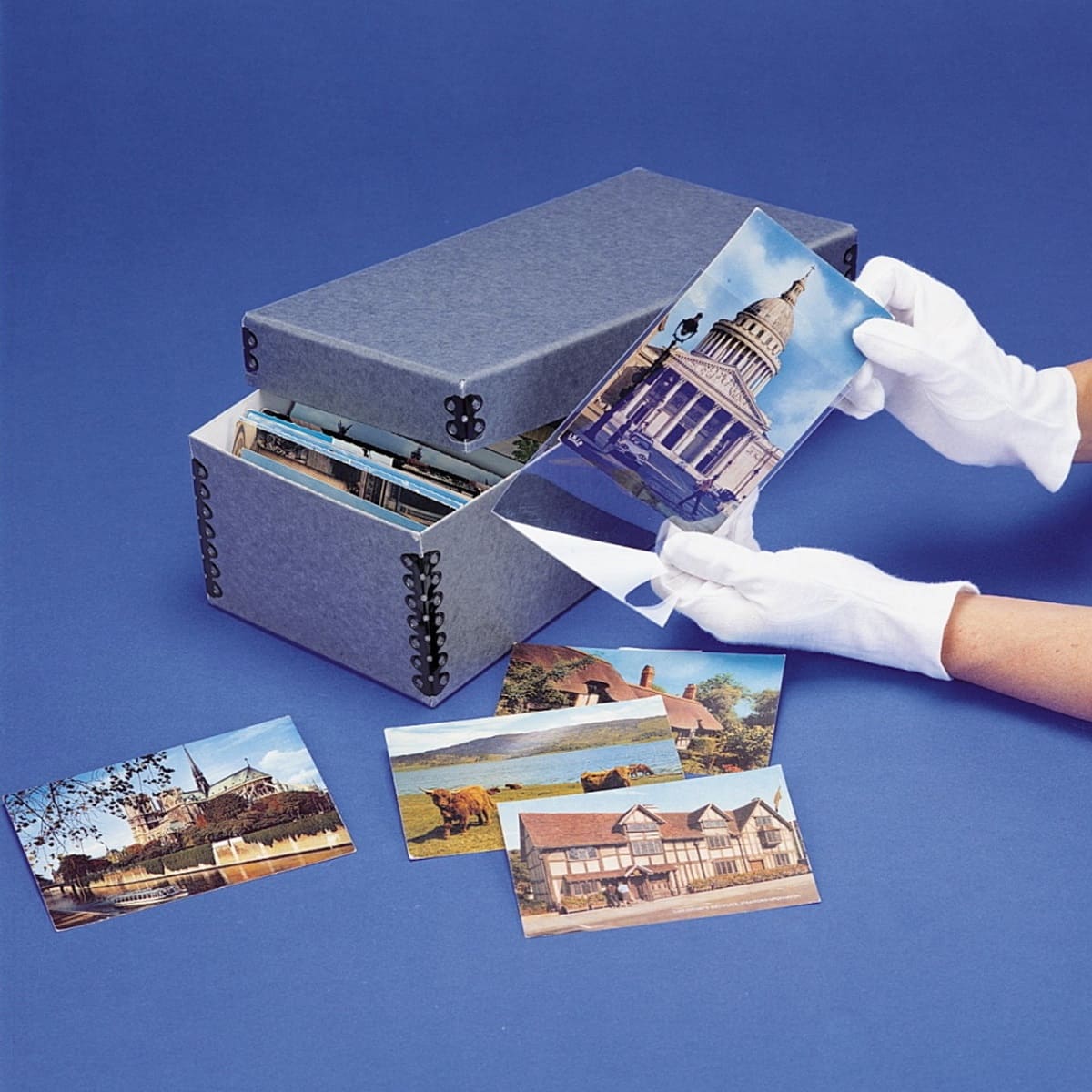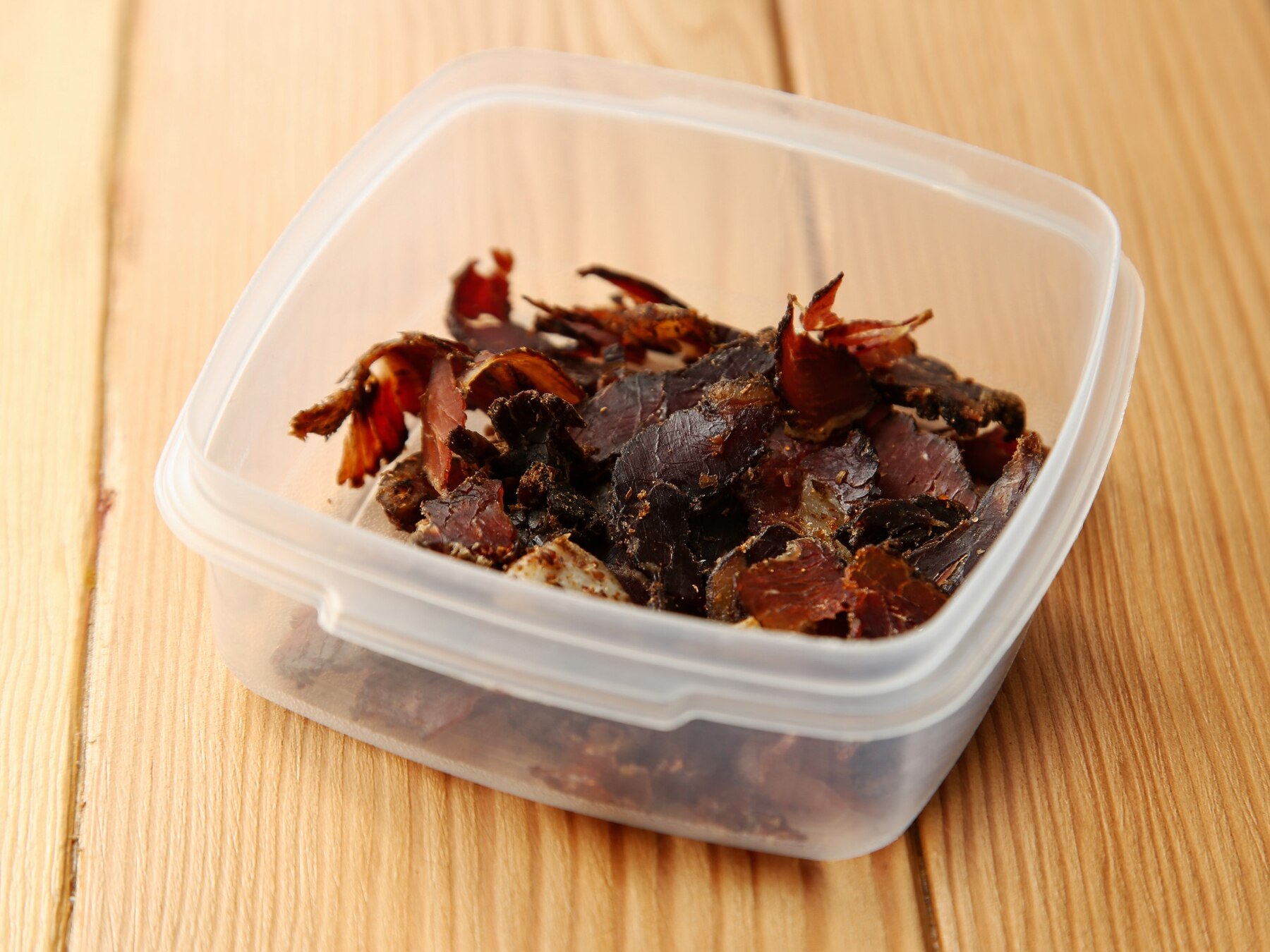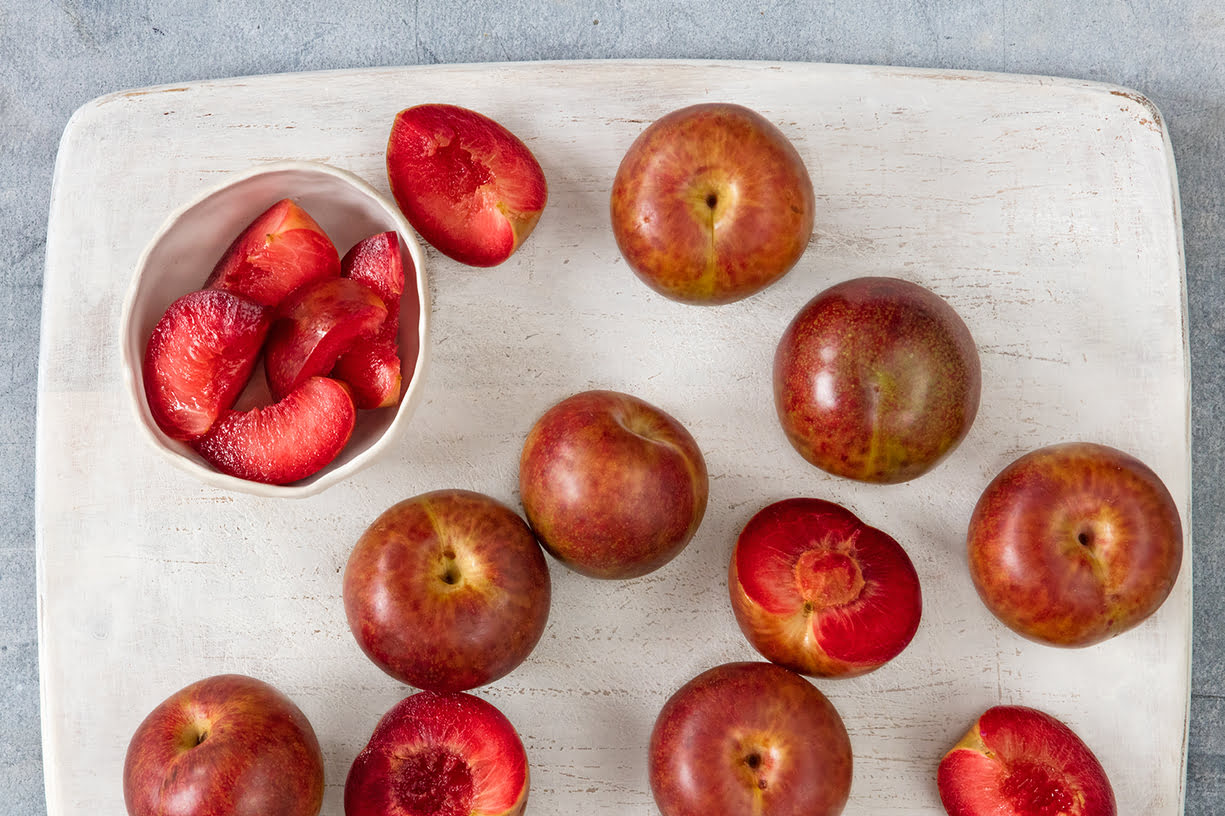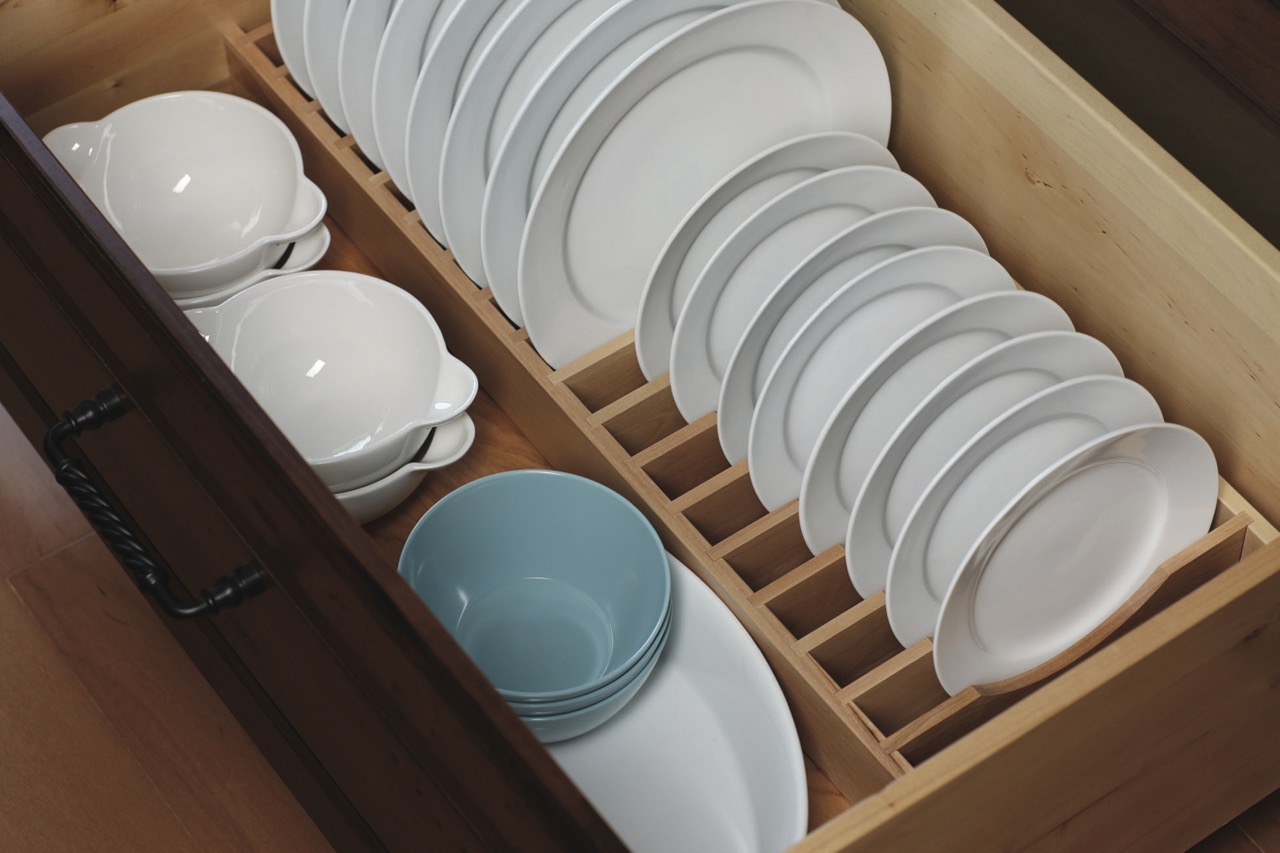

Articles
How To Store Postcards
Modified: August 30, 2024
Learn the best ways to store and preserve your postcard collection with our informative articles. Find tips, tricks, and expert advice to keep your postcards safe and in pristine condition.
(Many of the links in this article redirect to a specific reviewed product. Your purchase of these products through affiliate links helps to generate commission for Storables.com, at no extra cost. Learn more)
Introduction
Postcards are more than just pieces of mail. They are mementos of special moments, cherished tokens from distant lands, and windows into the past. Whether you collect postcards as a hobby or have a few sentimental ones you want to preserve, proper storage is crucial to ensure their longevity and maintain their value.
In this article, we will explore the importance of proper storage for postcards and provide you with practical tips on how to store them effectively. From choosing the right storage materials to organizing and labeling postcard collections, we will cover all aspects of postcard storage to help you keep your cherished cards in excellent condition.
By following the guidelines outlined in this article, you can prevent damage caused by environmental factors, such as light, moisture, and fluctuations in temperature. Additionally, proper storage will protect postcards from wear and tear, preventing creases, discoloration, and fading.
So, whether you have a few postcards or an extensive collection, let’s dive into the world of postcard storage and discover the best practices to keep your cards safe and preserve their beauty for years to come.
Key Takeaways:
- Proper storage of postcards is crucial to protect their historical and sentimental value. Choosing acid-free materials, preparing postcards for storage, and regular maintenance are key to preserving their condition and longevity.
- Organizing and labeling postcard collections enhances enjoyment and accessibility. Utilizing themed categorization, digital archives, and effective organization methods ensures easy retrieval and maintenance of postcard collections.
Read more: How To Store Store-Bought Bread
Importance of Proper Storage for Postcards
Postcards are not just pieces of paper; they hold sentimental value, historical significance, and artistic beauty. Whether you’re an avid postcard collector or have a few cards that are dear to your heart, understanding the importance of proper storage is essential to safeguard their integrity and preserve their value.
One of the main reasons for storing postcards correctly is to protect them from potential damage. Postcards are prone to wear and tear that can arise from various factors, including exposure to light, moisture, and fluctuations in temperature. Over time, these elements can cause physical and chemical damage to the cards, such as fading, discoloration, and deterioration.
Additionally, proper storage helps to prevent creases, bends, and tears. Postcards are often made of delicate materials, and mishandling them or storing them inappropriately can lead to permanent damage. By implementing the right storage techniques, you can protect the structural integrity of the cards and ensure their longevity.
Another crucial aspect of proper postcard storage is preserving their historical and artistic significance. Postcards provide a glimpse into the past, showcasing a snapshot of a particular time, place, or event. They often contain valuable information, such as handwritten messages, postmarks, and unique stamps, which add to their historical value. By storing postcards correctly, you can safeguard these details and preserve the story they tell for future generations.
Furthermore, well-preserved postcards can retain their aesthetic appeal and collectible value. Postcards can appreciate in value over time, especially if they are rare, hold historical significance, or depict renowned artists’ illustrations. Proper storage techniques, such as using archival materials and minimizing exposure to damaging factors, help maintain the cards’ condition, ensuring that their beauty and collectible value remain intact.
Overall, storing postcards correctly is essential for their longevity, protection, and preservation of their historical and artistic significance. By implementing proper storage techniques, you can enjoy your postcards for years to come, share their stories with others, and potentially pass them down as cherished family heirlooms.
Choosing the Right Storage Materials
When it comes to preserving postcards, selecting the appropriate storage materials is crucial. The right materials can provide protection from damaging elements, minimize the risk of physical harm, and create an optimal environment for long-term storage. Here are some factors to consider when choosing the right storage materials for your postcards:
- Acid-free and Archival-quality Materials: Acidic materials, such as regular paper or cardboard, can cause discoloration and deterioration of postcards over time. Opt for acid-free and archival-quality materials, such as acid-free sleeves, folders, or storage boxes. These materials are made from pH-neutral components, ensuring that they won’t harm the postcards.
- Light-blocking Properties: Exposure to light can cause fading and yellowing of postcards. Choose storage materials that have light-blocking properties, such as opaque sleeves or boxes. This will protect your postcards from harmful UV rays and help preserve their vibrant colors and crispness.
- Size and Fit: Ensure that the storage materials you select are of the appropriate size and fit for your postcards. Loose-fitting materials can cause the cards to slide and potentially get damaged. It is best to choose materials that snugly hold the postcards without causing any stress or bending.
- Archival Sleeves or Polypropylene Sleeves: Archival sleeves made from polyester, polyethylene, or polypropylene are excellent options for individual postcard protection. These sleeves are transparent, allowing for easy viewing, while also providing a barrier against moisture, dust, and fingerprints. Make sure the sleeves are archival quality and free from harmful chemicals that can damage the postcards.
- Storage Boxes: Sturdy storage boxes specifically designed for postcards are ideal for long-term storage. Look for acid-free, archival-quality boxes with a flip-top or clamshell design. These boxes provide protection against light, dust, and physical damage while allowing easy access to your postcard collection.
Remember, it’s essential to handle your postcards with clean hands to avoid transferring oils and dirt onto them. Using clean, white cotton gloves when handling delicate or valuable postcards can further prevent damage.
By carefully choosing the right storage materials, you can create a safe and protective environment for your postcards, ensuring they remain in excellent condition for years to come.
Preparing Postcards for Storage
Before you store your postcards, it is important to properly prepare them to minimize the risk of damage and ensure their long-term preservation. Follow these steps to prepare your postcards for storage:
- Clean the Postcards: Start by gently cleaning the postcards to remove any dirt, dust, or debris. Use a soft, lint-free cloth or a small brush to gently wipe the surface of the cards. Avoid using water or any cleaning solutions unless absolutely necessary, as they may cause damage to the postcards.
- Remove Any Attachments: If your postcards have any attachments such as stickers, adhesive tape, or paperclips, carefully remove them. These attachments can cause staining or adhesive residue over time, so it’s best to separate them from the postcards before storing.
- Repair Minor Damage: If you notice any minor damage, such as small tears or creases, you can consider repairing them before storage. Use acid-free and archival-quality tape or glue to mend tears, taking extra care to ensure that the adhesive does not come into contact with the surface of the postcards.
- Protect Fragile Postcards: If you have particularly fragile or valuable postcards, consider placing them in individual protective sleeves. These sleeves will provide an extra layer of protection against physical damage and help prevent any potential interaction between the postcards.
- Arrange Postcards in the Correct Order: If you have a specific order or arrangement for your postcards, ensure they are in the desired sequence before storage. This will make it easier to retrieve and organize them in the future.
- Take Digital Copies: Consider making digital copies or scans of your postcards before storage. This will allow you to enjoy and share the images without handling the physical cards frequently.
- Document Details: Keep a record of important details for each postcard, such as the date, location, and any special significance. This information will serve as a reference and add value to your collection.
By taking the time to properly prepare your postcards before storing them, you can minimize the risk of damage and ensure their longevity. Remember to handle them with care and use archival-quality materials to maintain their beauty and value.
Options for Storing Postcards
When it comes to storing postcards, there are several options available depending on the size of your collection, your storage space, and your personal preference. Here are some common options for storing postcards:
- Postcard Albums: Postcard albums are specifically designed to hold and display postcards. These albums usually have clear plastic sleeves that allow you to easily view and protect your postcards. Look for albums with acid-free pages or archival-quality sleeves to ensure the best preservation for your cards.
- Archival Storage Boxes: Archival storage boxes are another popular choice for storing postcards, especially if you have a large collection. These boxes are made from acid-free, durable materials and provide protection from light, dust, and physical damage. They are available in various sizes to accommodate different postcard dimensions.
- Individual Sleeves or Envelopes: If you prefer to store your postcards individually, you can use archival-quality sleeves or envelopes. Each postcard can be placed in a separate sleeve or envelope to protect it from dust and handling. These individual storage options are ideal for fragile or valuable postcards.
- Binder Sheets: Binder sheets, usually made of archival-quality material, can be used to store postcards in a ring binder. The sheets have pockets where you can slide the postcards, allowing you to organize and easily flip through your collection.
- Shadow Boxes or Display Frames: If you want to showcase your postcards while protecting them, consider using shadow boxes or display frames. These display options allow you to mount and exhibit your favorite postcards on the wall, creating a unique and decorative display.
- File Cabinets or Filing Systems: For those with a vast collection of postcards, filing systems such as file cabinets or labeled boxes can be used. Organize your postcards by category, location, or theme and store them in labeled folders or dividers for easy access.
When choosing a storage option, consider factors such as accessibility, protection from environmental elements, and the overall aesthetic appeal. It’s important to select a method that suits your needs and allows you to enjoy and preserve your postcards effectively.
Remember to store your postcards in a cool, dry location away from direct sunlight and extreme temperatures. This will help prevent any damage caused by fluctuations in humidity or exposure to harmful UV rays.
By selecting the right storage option for your postcards, you can not only protect them from damage but also create an organized and visually appealing display for your collection.
Store postcards in acid-free archival sleeves or albums to protect them from damage. Keep them in a cool, dry place away from direct sunlight to prevent fading.
Read more: How To Store Basil From Grocery Store
Best Practices for Storing Postcards
When it comes to storing postcards, following best practices is essential to ensure their preservation and longevity. By implementing these practices, you can minimize the risk of damage and maintain the beauty and integrity of your postcard collection. Here are some key best practices for storing postcards:
- Use Archival-Quality Materials: Opt for storage materials that are acid-free, archival-quality, and free from harmful chemicals. These materials will help maintain the condition of your postcards and prevent deterioration.
- Avoid Direct Sunlight: Protect your postcards from direct sunlight, as exposure to UV rays can cause fading and discoloration. Store them in a location where they are shielded from light or use light-blocking storage materials.
- Control Humidity and Temperature: Postcards are susceptible to damage from high humidity and temperature fluctuations. Store them in a cool, dry area to prevent the growth of mold or mildew and to avoid the deterioration of the cards.
- Handle Postcards with Clean Hands: Ensure your hands are clean and free from oils, lotions, or any substances that could transfer to the postcards. Consider using white cotton gloves when handling delicate or valuable postcards.
- Store Flat or Upright: Choose a storage method that keeps the postcards flat or in an upright position to prevent bending or warping. Avoid storing postcards piled on top of each other, as this can lead to damage.
- Keep Postcards in Acid-Free Sleeves: Place each postcard in an individual acid-free protective sleeve to prevent them from rubbing against each other and getting damaged. This will also help protect them from dust, fingerprints, and other contaminants.
- Label and Organize: Maintain a system for organizing and labeling your postcard collection. This will allow for easy retrieval and help you keep track of the cards’ details, such as dates, locations, or themes.
- Regularly Inspect and Maintain: Periodically check your postcards for any signs of damage or deterioration. If necessary, make any repairs or adjustments to storage materials to ensure continued protection.
- Monitor Environmental Factors: Keep an eye on the storage environment, checking for any changes in temperature or humidity that could potentially harm your postcards. Consider using a humidity and temperature monitor to keep track of conditions.
- Keep Postcards Away from Harmful Substances: Avoid storing postcards near substances that could cause damage, such as adhesives, rubber bands, or liquids that may spill or leak.
By following these best practices, you can create an environment that promotes the longevity and preservation of your postcards. Proper storage and maintenance will ensure that your postcards remain in excellent condition, allowing you to cherish and share them for years to come.
Organizing and Labeling Postcard Collections
Organizing and labeling your postcard collection is crucial for easy retrieval, maintaining order, and enhancing your overall enjoyment of the collection. By implementing effective organization strategies and labeling techniques, you can create a well-structured and easily navigable postcard collection. Here are some tips for organizing and labeling your postcard collections:
- Categorize by Theme or Location: Consider organizing your postcards by theme, such as landscapes, architecture, or vintage postcards, or by location, such as cities, countries, or states. This will allow you to quickly find postcards based on your interests or specific locations.
- Use Index Cards or Spreadsheet: Employ index cards or a spreadsheet to create a comprehensive catalog of your postcard collection. Include information such as date, location, theme, and any other relevant details. This catalog will serve as a reference for quick retrieval and tracking the status of your collection.
- Create Folders or Dividers: Use folders or dividers to physically separate different categories or themes within your storage system. This will help keep your postcards organized and prevent them from getting mixed up or misplaced.
- Label Storage Containers: Label your storage containers, such as postcard albums, archival boxes, or filing systems, with clear and descriptive labels. This will make it easier to locate specific postcards and ensure that they are returned to their proper place after use.
- Use Clear Sleeves or Pockets: If using an album or binder system, opt for clear sleeves or pockets for your postcards. This allows for easy viewing and ensures that the postcards are securely held in place while still protecting them from dust and fingerprints.
- Consider Numerical or Alphabetical Order: If you have a large collection, numbering or alphabetizing your postcards can be an effective organization method. Assign a unique number or letter to each postcard and arrange them accordingly, making it simpler to locate specific cards within your collection.
- Create a Digital Archive: Supplement your physical collection with a digital archive. Scan your postcards and create digital files or albums that can be easily accessed and shared. This provides a backup to your physical collection and allows for convenient digital browsing.
- Periodically Review and Update: Regularly review and update your organizational system, especially as your collection grows. This will ensure that new additions are properly integrated, and any changes or adjustments are made to maintain the integrity of your postcard collection.
By implementing effective organization and labeling techniques, you can create a well-structured and easily accessible postcard collection. This will not only make it easier for you to navigate your collection but also enhance the overall enjoyment and appreciation of your postcards.
Displaying Postcards in a Safe Manner
Displaying your postcards can add a visual and decorative element to your space while allowing you to enjoy and showcase your collection. However, it’s important to display your postcards in a safe manner to prevent damage and ensure their longevity. Here are some tips for displaying postcards while keeping them protected:
- Use Acid-Free Matting: If you choose to frame your postcards, use acid-free matting to create a buffer between the card and the glass. Acid-free mats prevent the postcards from coming into direct contact with the glass, reducing the risk of damage caused by moisture or condensation.
- Opt for UV-Protected Glass: When framing your postcards, consider using UV-protected glass or acrylic that filters out harmful UV rays. This will help prevent fading and discoloration over time, keeping your postcards vibrant and intact.
- Avoid Direct Sunlight: When selecting a location to display your postcards, ensure that they are not exposed to direct sunlight. Prolonged exposure to sunlight can cause fading and damage the delicate paper and ink of the postcards.
- Rotate Displayed Postcards: To protect your postcards from prolonged exposure to light and prevent uneven fading, periodically rotate the cards you have on display. Replace them with different postcards from your collection to evenly distribute the exposure.
- Use Display Sleeves or Clips: If you prefer not to frame your postcards, consider using display sleeves or clips specifically designed for postcards. These sleeves or clips allow you to showcase your postcards while providing a protective barrier against dust and fingerprints.
- Consider Display Racks or Stands: Display racks or stands are a great option to showcase multiple postcards at once. Look for holders made from acid-free materials that securely hold your postcards and prevent them from bending or slipping.
- Avoid Overcrowding: When displaying your postcards, be mindful not to overcrowd the space. Leave enough room for each postcard to be seen and appreciated. Overcrowding can put unnecessary pressure on the cards and increase the risk of damage.
- Monitor Humidity and Temperature: Keep an eye on the environmental conditions of the display area. Avoid displaying your postcards in areas with high humidity or extreme temperature fluctuations, as these conditions can lead to the deterioration of the cards.
- Be Mindful of Handling: When handling postcards for display purposes, use clean and dry hands to prevent transferring oils or dirt onto the cards. Minimize touching the front surface of the postcards and handle them by their edges to prevent smudging or damage.
By adhering to these guidelines, you can effectively display your postcards while protecting them from damage. Remember to regularly inspect your displayed postcards for any signs of deterioration or fading and make any necessary adjustments or rotations to maintain their condition.
Maintaining the Condition of Stored Postcards
Proper care and maintenance are essential for preserving the condition of your stored postcards. By following these practices, you can ensure that your postcards remain in excellent condition for years to come:
- Regularly Inspect: Periodically examine your stored postcards for any signs of damage, such as creases, discoloration, or moisture spots. Early detection allows for prompt intervention and minimizes the risk of further deterioration.
- Control the Storage Environment: Store your postcards in a cool, dry, and stable environment. Avoid areas that are prone to extreme temperature fluctuations, high humidity, or direct sunlight. Constant exposure to such conditions can lead to card deterioration.
- Prevent Insect Damage: Keep an eye out for any signs of pests or insects that could potentially damage your postcards. Store them away from areas that are prone to infestations and consider using insect repellents or traps if necessary.
- Avoid Adhesive Contact: Prevent postcards from coming into contact with adhesive materials, as they can leave marks or cause damage. When using sleeves or envelopes, ensure that the adhesive parts are far away from the surface of the postcards.
- Handle with Clean Hands: When retrieving or handling stored postcards, make sure your hands are clean and dry to prevent any transfer of oils, dirt, or moisture onto the cards. Consider using white cotton gloves when handling delicate or valuable postcards.
- Minimize Touching the Surface: Handle postcards by their edges to avoid smudging or damaging the delicate printed surface. The oils from your fingers can cause discoloration or deterioration over time.
- Protect from Dust: Dust accumulation can be harmful to postcards, especially if left unchecked for prolonged periods. Regularly clean the storage containers and shelves to prevent dust from settling on the cards. Consider using dust jackets or clear sleeves as an additional layer of protection.
- Avoid Pressure: Avoid placing heavy objects or stacking multiple storage containers on top of your postcards. Excessive pressure can cause bending, warping, or other physical damage.
- Control Handling Frequency: Limit the frequency of handling stored postcards to minimize the risk of accidental damage. Excessive handling can lead to wear and tear, creasing, or accelerated fading of the cards.
- Keep Storage Containers Secure: Ensure that the storage containers are properly sealed and secured to prevent any accidental spills, water damage, or intrusion of harmful substances.
By implementing these practices, you can maintain the condition and quality of your stored postcards, preserving their beauty and ensuring their longevity for years to come. Regular maintenance and careful handling will allow you to continue enjoying your postcard collection for generations to come.
Read more: How To Store Jordans
Conclusion
Preserving and protecting your postcard collection is not only a means of safeguarding cherished memories but also a way to maintain their historical, artistic, and sentimental value. By following proper storage techniques, choosing the right materials, and implementing best practices, you can ensure that your postcards remain in excellent condition for years to come.
Proper storage materials, such as acid-free sleeves, archival boxes, and UV-protected glass, create a protective environment that shields postcards from damaging elements. Organizing and labeling your postcard collection allows for easy retrieval and tracking, while display options offer a visually appealing way to showcase your cherished cards.
Taking the time to prepare your postcards for storage, clean them, and remove any attachments or repairs as needed, helps mitigate damage and ensures their longevity. Regularly inspecting stored postcards, controlling the storage environment, and practicing careful handling will further preserve their condition.
Whether you’re a seasoned postcard collector or simply want to preserve cherished mementos, following these guidelines will help maintain the integrity, beauty, and value of your postcards. By treating your postcards with care and employing the best storage practices, you can enjoy their stories, share their beauty, and pass them down as treasured heirlooms for generations to come.
So, take the necessary steps to protect and preserve your postcard collection, and continue to enjoy the unique and nostalgic charm that these cherished pieces hold.
Frequently Asked Questions about How To Store Postcards
Was this page helpful?
At Storables.com, we guarantee accurate and reliable information. Our content, validated by Expert Board Contributors, is crafted following stringent Editorial Policies. We're committed to providing you with well-researched, expert-backed insights for all your informational needs.














0 thoughts on “How To Store Postcards”